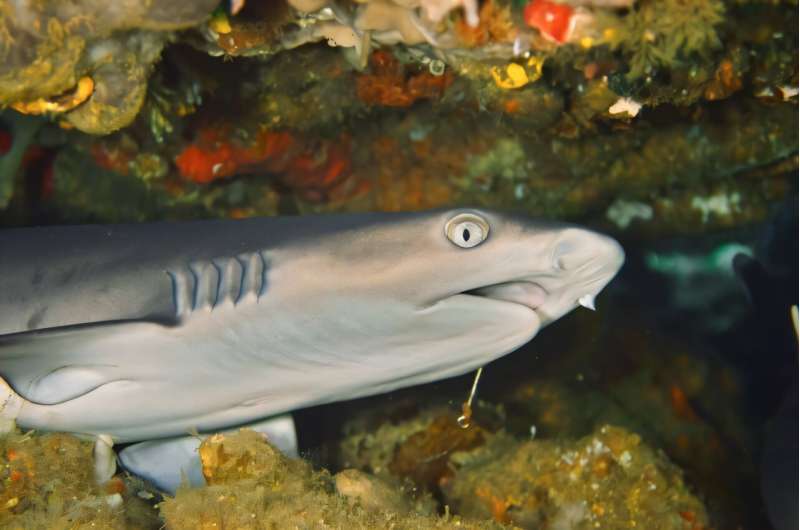A comprehensive study led by the University of Vienna reveals a significant decline in shark and ray biodiversity over the past 100 million years. Published on November 20, 2025, in *Scientific Reports*, the research challenges previous assumptions that these species’ diversity was either stable or increasing.
The study, undertaken by a team of international researchers, analyzed fossil data and environmental conditions to understand the historical trends affecting these marine creatures. According to lead researcher Manuel A. Staggl, cartilaginous fish, which include modern sharks and rays, have existed for over 400 million years and have survived multiple mass extinction events. Yet today, over a third of neoselachians are facing the threat of extinction.
Key Findings on Biodiversity Trends
The researchers discovered that biodiversity among sharks and rays peaked around the Eocene epoch, approximately 45 million years ago, during a period of significantly warmer climate conditions. Since then, the decline has been continuous, with several factors contributing to this trend.
One notable finding is that the mass extinction event caused by the asteroid impact 66 million years ago had a minimal effect on sharks and rays. Staggl noted that these species demonstrated remarkable resilience and recovered swiftly from the catastrophe.
The availability of shallow coastal habitats has been identified as a crucial factor influencing the emergence of new shark and ray species over the past 66 million years. Jürgen Kriwet, head of the Evolutionary Morphology Research Group at the Institute of Paleontology, emphasized that diverse shallow marine habitats encourage species proliferation. However, he warned that these habitats are severely threatened by coastal development, global warming, pollution, and unsustainable fishing practices.
The Impact of Carbon Dioxide Levels
The researchers also examined the role of carbon dioxide (CO2) and found its effect on biodiversity to be more complex than previously understood. Moderate levels of CO2 were found to positively influence shark and ray biodiversity by enhancing photosynthesis in marine plants, thus benefiting the entire food chain. Staggl pointed out that while moderate CO2 levels were beneficial historically, excessive levels have proven detrimental to marine ecosystems, particularly in light of current ocean acidification driven by human activities.
The study highlights that the present biodiversity crisis, arising from overfishing, habitat destruction, and rapid climate change, is fundamentally different from historical threats. Staggl emphasized that sharks and rays in the past had time to adapt to environmental changes, whereas today’s rapid alterations leave little room for adaptation.
Specialized species, such as deep-sea sharks adapted to stable cold environments, are particularly vulnerable to the rapid increase in global temperatures.
The findings underscore the urgent need for effective conservation strategies. Prioritizing the preservation and restoration of diverse coastal habitats is critical. Additionally, significant reductions in CO2 emissions are essential to mitigate the impacts of ocean acidification.
“Our study shows that marine conservation must extend beyond fishing quotas to encompass entire habitats and the broader climate system,” concluded Staggl. The research serves as a crucial reminder of the intricate connections between environmental health and the survival of marine species.
For further details, refer to the study by Manuel Andreas Staggl et al., titled “Global Environmental Drivers Shape Cenozoic Neoselachian Diversity and Identify Modern Conservation Priorities,” published in *Scientific Reports*.
